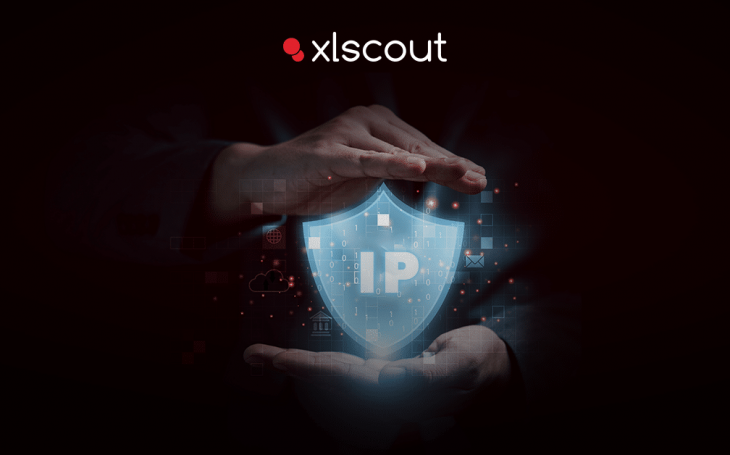
It is critical to protect intellectual property in order to establish and maintain its value. Defining and protecting digital property (software applications etc.) is difficult in a digital economy defined by 1s and 0s (and soon, qubits), as opposed to the physical machinery of previous industrial eras.
To be eligible for a patent, an idea must be novel, useful, and non-obvious. Historically, intellectual property (IP) has been defined by the unique design and configuration of physical components capable of producing a desired output. This standard was relatively simple to apply to a machine. The benefits of a machine and the characteristics that support its claims are measurable and observable. The furnace burned hotter, and the machine assembled parts faster. It was also simpler to determine the novelty of an idea. Two machines could have similar parts but be configured differently to produce entirely new or significantly higher-quality output.
Software’s worth and ingenuity are based on a complex relationship between its configuration, outputs, and user interaction. These provide a foundation for protecting software as intellectual property, but there is no clear line for determining a software’s patentability. Patents, trademarks, or copyrights could potentially protect the functions of software, the steps it takes to function, and the overall configuration of the computer itself. A machine is more tangible than software and the code that powers it. As a result, machine learning processes, algorithms, and some artificial intelligence programmes are difficult to protect under current intellectual property law because it is unclear what truly distinguishes them.
Patents for Software
The difficulty in patenting computer code is that it frequently represents an abstract idea. And, while abstract ideas cannot be patentable, processes related to those ideas may be. If software improves overall computer functionality—for example, by increasing processing speed or the number of resources required to function, or by performing those tasks in a novel way—it may be eligible for a utility patent. However, the same computer functionality can be accomplished in a variety of ways. Core code can change during the updating and maintenance process. Because of these factors, utility patents are a complicated option for protecting software.
XLSCOUT’s AI-powered tool helps in determining the patentability of software.
Legal Precedent
The 2014 SCOTUS case Alice Corp. v. CLS Bank established a two-step procedure for determining whether software is patentable. To begin, avoid abstract concepts. If the concept is abstract, it must be “transformed” through technical description. If the claims and description of your patent application include significant details about how a programme’s code overcomes a technical challenge, it may be granted a patent and sustain the patent legal system.
The well-known case Microsoft v. Enfish illustrates these principles. After demonstrating that abstract concepts can achieve transformational status, Microsoft was granted a patent for its database retrieval software. Microsoft’s was an updated concept for storing, organizing, and retrieving data. However, its claims also included software functionality that fundamentally altered how self-referential tables worked. A variety of software and software processes, including user-interface features, editorial functions, operating system techniques, compiling techniques, algorithmic processes, display presentations or arrangements, menu arrangements, and programme language translation methods, can be patented under these rules.
Alternatives to Utility Patents
1. Design Patents for Software
Design patents are a promising platform for software. They protect a graphical item’s or graphic user interface’s distinct visual characteristics. Surface ornamentation and distinct technical configurations (functionality) can both be covered by design patents (appearance). Both are important in software because great design usually follows function. A software product with dramatically different functionality would indeed be unlikely to appear the same on the outside in an era when users demand interfaces that are cohesive with the product underneath.
Design patents have always been more easily obtained than utility patents. Indeed, many people avoid applying for them because they are perceived to be of low quality and thus provide little protection. However, there are several advantages to patenting Graphical User Interface (GUI) over utility patents. A design patent has the following advantages:
- More easily obtained than utility patents
- When the design promotes software functionality, it provides extensive protection.
2. Defensive Publication
If you are unwilling to go through the risky patent application process, a defensive publication for your software may be an option. By preventing others from patenting your software, defensive publications can protect your market share and freedom to operate (FTO). In an uncertain legal environment, this IP strategy may make more sense. XLSCOUT’s proprietary database is designed for situations in which companies want to quickly and affordably obtain software protection without wanting to commit to the cost and risk of the patent application process. Our database is a collection of prior art and technical information that is made available to IP professionals all over the world. These characteristics are useful for technology such as software that easily crosses international borders.

3. Copyright
Seeking copyright protection is a viable option to a patent and is frequently less expensive. Copyright provides similar protections to patents, allowing you to reproduce, distribute, and license your software. Copyright can be more easily enforced.
4. Trademark
A trademark gives the owner the exclusive right to use a word, name, or symbol (a mark) to describe and distinguish a product from others. A trademark has indefinite protection as long as the owner renews it on a regular basis. If the owner does not use the trademark for three years or more, this is considered “abandonment” and may result in the trademark being lost. Although trademarks do not protect designs or functions, they can help your product stand out in the marketplace by safeguarding the name or tagline. Trademarks can protect a brand, but they can’t protect much else.

